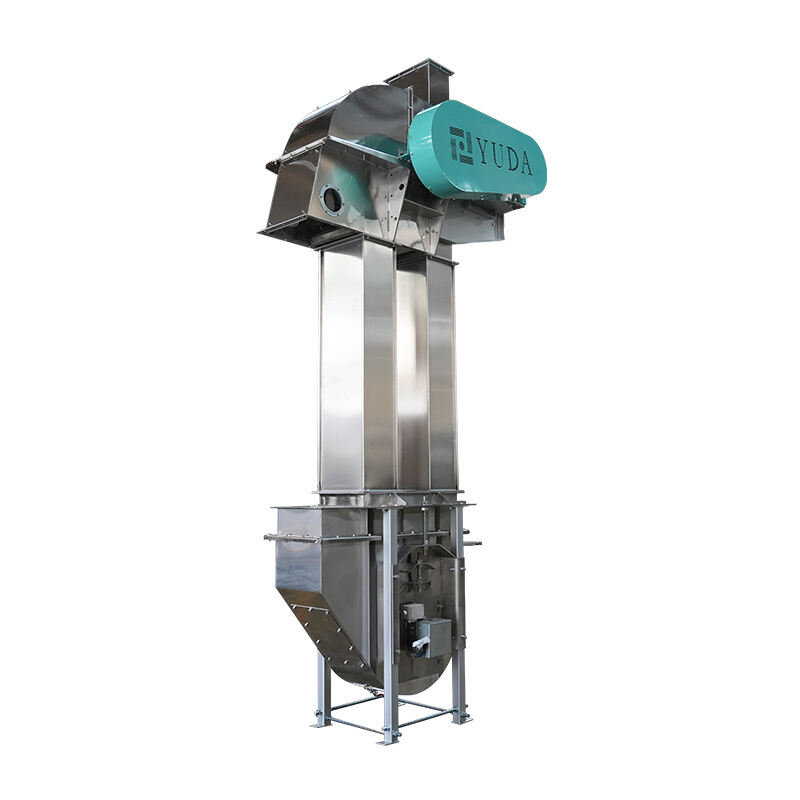In feed, fertilizer and grain processing facilities, bucket elevators are vital in handling material vertically. But, inefficient discharge may cause materials build-up, energy losses and throughput loss.
These are 7 ideas that will definitely help you improve the discharge efficiency in your bucket elevator:
Choose the Right Bucket Design
Bucket shape and spacing: The shape of buckets and the spacing between them can have a big influence on discharge:
Centrifugal discharge elevators: Free-flowing materials (grains, pellets): Centrifugal discharge elevators use shallow, rounded buckets.
Continuous discharge elevators: Have tight buckets which are deep to handle sticky or abrasive products (powdered feed, fertilizers).
Bucket material: Corrosion resistance polyethylene, or steel (heavy duty).
Tip: We have specifically designed buckets that reduce the carry over of material and enhance the discharge rates.
Optimize Discharge Chute Design
A poorly designed chute leads to blockages, and backflows. Ensure:
Smooth interior surfaces (stainless steel or UHMW plastic lined).
Sufficient slope (60 or more degrees, on free-flowing materials; more, on cohesive materials).
Correct positioning so as to avoid spillage on the discharge point.
Adjust Head Pulley Speed
Too slow: Not full discharge, material falls back in the boot.
Too quick: Scattered material due to too strong centrifugal force.
Optimal speed: Seeks material properties (see manufacture specifications).
Maintain Proper Belt/Tensioning System
Belt tension should be checked frequently- Loose belts will slip and become misaligned.
Check belt condition - Change belts that are worn to avoid mistracking.
Apply good quality belts with good grip to attach bucket.
Reduce Material Moisture and Stickiness
Sticky or wet substances (such as feed that is covered in molasses) will adhere to buckets. Solutions:
It is preferable to pre-dry materials prior to elevation.
Make coat buckets with non-stick (Teflon, ceramic lining).
Put vibrators or air blasters to aid discharge.
Regular Cleaning and Maintenance
Clean buckets, pulleys and chutes of built up material.
Apply grease to bearings to stop them seizing up and to ease friction.
Check bucket attachments -Loose bolts lead to misalignment.
Upgrade to High-Efficiency Discharge Systems
For challenging materials, consider:
Self-cleaning buckets with flexible backs.
Positive discharge elevators (for sticky or fine powders).
Automated monitoring systems to detect discharge issues in real-time.
Why Choose Yuanyuda's Bucket Elevators?
Our complete feed and fertilizer production lines include high-efficiency bucket elevators with:
Customized bucket designs for optimal discharge
Heavy-duty construction for long service life
Professional installation and maintenance support
By implementing these strategies, you can boost discharge efficiency, reduce energy costs, and minimize downtime in your material handling system.

 EN
EN















